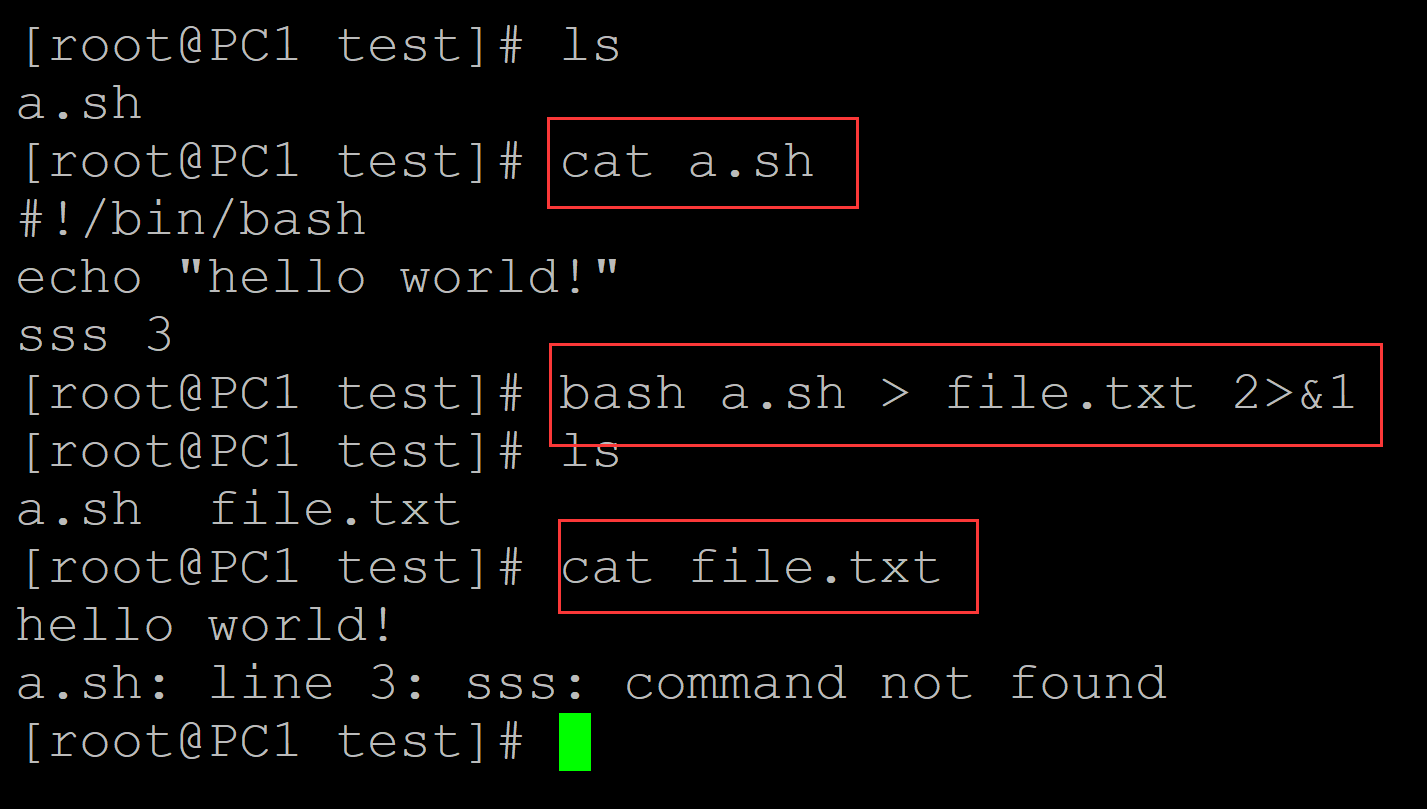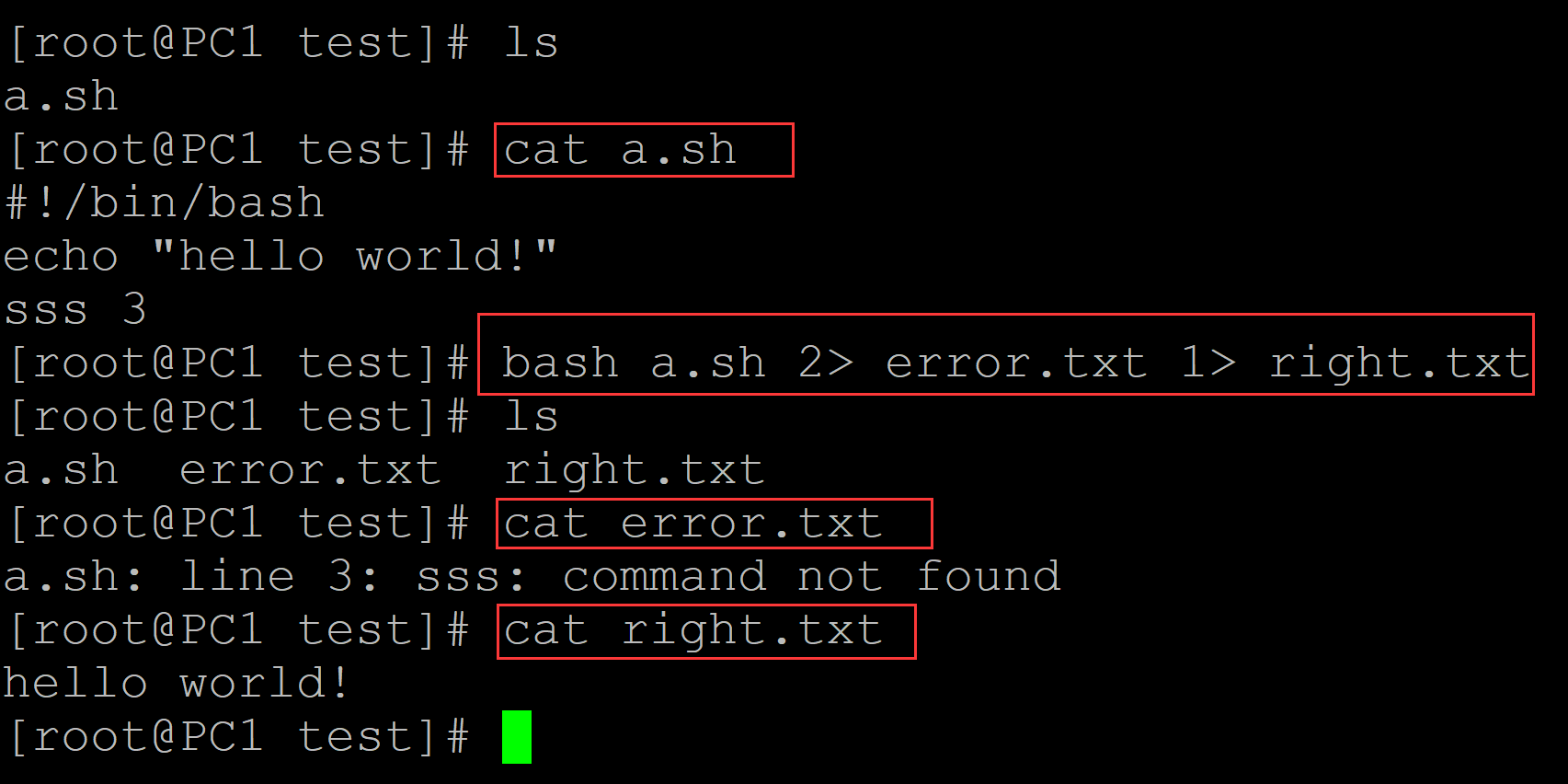Linux 系统中 2>&1 & 标准输出、标准错误输出
2>&1 &
0:标准输入
1:标准输出
2:标准错误输出
command 2>&1 > file.txt:将标准输出输出到file中,标准错误输出输出屏幕
command > file.txt 2>&1: 将标准错误输出 输出到标准输出中。
command 2> error.txt 1> right.txt:标准错误输出到error.txt,标准输出到right.txt
2>&1 &:最后的&表示后台运行。
例子:
001、 command 2>&1 > file.txt: 标准输出输出到 file.txt, 标准错误输出输出到终端
[root@PC1 test]# ls a.sh [root@PC1 test]# cat a.sh ## 测试程序 #!/bin/bash echo "hello world!" sss 3 [root@PC1 test]# bash a.sh 2>&1 > file.txt ## 2>&1 > file.txt: 标准输出输出到 file.txt, 标准错误输出输出到终端 a.sh: line 3: sss: command not found [root@PC1 test]# ls a.sh file.txt [root@PC1 test]# cat file.txt ## 标准输出输出到file.txt hello world!

002、 command > file 2>&1:标准错误输出也输出到标准输出文件中
[root@PC1 test]# ls a.sh [root@PC1 test]# cat a.sh ## 测试程序 #!/bin/bash echo "hello world!" sss 3 [root@PC1 test]# bash a.sh > file.txt 2>&1 ## 标准错误输出也输出到标准输出中 [root@PC1 test]# ls a.sh file.txt [root@PC1 test]# cat file.txt ## 结果文件 hello world! a.sh: line 3: sss: command not found

003、 comman 2> error.txt 1> right.txt
[root@PC1 test]# ls a.sh [root@PC1 test]# cat a.sh #!/bin/bash echo "hello world!" sss 3 [root@PC1 test]# bash a.sh 2> error.txt 1> right.txt ## 标准错误输出到error.txt, 正确输出到right.txt [root@PC1 test]# ls a.sh error.txt right.txt [root@PC1 test]# cat error.txt a.sh: line 3: sss: command not found [root@PC1 test]# cat right.txt hello world!

004、如果末尾有&, 表示后台运行
分类:
linux shell






【推荐】国内首个AI IDE,深度理解中文开发场景,立即下载体验Trae
【推荐】编程新体验,更懂你的AI,立即体验豆包MarsCode编程助手
【推荐】抖音旗下AI助手豆包,你的智能百科全书,全免费不限次数
【推荐】轻量又高性能的 SSH 工具 IShell:AI 加持,快人一步
· 震惊!C++程序真的从main开始吗?99%的程序员都答错了
· 【硬核科普】Trae如何「偷看」你的代码?零基础破解AI编程运行原理
· 单元测试从入门到精通
· 上周热点回顾(3.3-3.9)
· winform 绘制太阳,地球,月球 运作规律
2022-05-15 org.Mm.eg.db包的安装
2022-05-15 R语言中assign函数
2022-05-15 R语言中mode和class的区别
2022-05-15 R语言中attr()函数